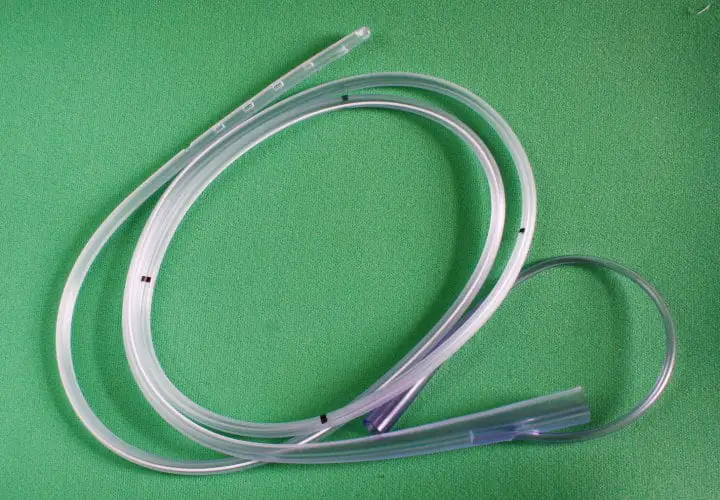Last updated on March 25th, 2022 at 08:15 pm
http://youtu.be/WgfNa7dzSn0
Nasogastric Insertion Demonstration NGT
NG tubes may be used for feeding or for drainage – read your instructions thoroughly as this will dictate the type of tube you need to use. Essentially you are inserting a tube from the patients nose into their stomach.
There are several absolute contraindications for insertion so you should be aware of these. For full guidance go to the NPSA website.
This is a skill that is important to know. Most medical schools now have mannequins to practice this on, although it’s not frequently examined upon. However it is very useful to know how to do – you don’t want your first time to be the middle of the night as a junior doctor when the nurses, who normally do it, call you as they cannot!
Subject steps
Wash your hands, introduce yourself to the patient and clarify their identity. Explain the procedure to the patient and gain their consent to proceed.
Wash your hands
Gather your equipment:
- Gloves
- Fine bore nasogastric tube (feeding only) or nasogastric “Ryles” tube 16Fr (all other indications)
- Water based lubricant
- Syringe
- Bile bag
- Securing device or tape
- Cup of water
- pH indicator paper
- Anaesthetic throat spray *
*As there is limited evidence to suggest that a local anaesthetic spray may reduce the gag reflex during NG tube insertion, not all health boards use this. You should check your local guidelines for whether this is recommended or not. If so use it prior to step 5.
For this procedure the patient should be positioned on the bed upright and facing forward. Put on your gloves.
Estimate the length of the tube to be inserted. Do this by measuring the NG tube from the tip of the nose, to the earlobe and then to the xiphisternum.
Xiphisternum position
Lubricate the tip of the tube and begin to insert through one of the nostrils. If any resistance is encountered change to the other nostril.
Your patient will usually be awake during this procedure so ensure they are not experiencing too much discomfort.
Ask the patient to indicate when the tube is at the back of the throat, or if they have had anaesthetic spray ask the patient to open their mouth and look for the end of the tube.
Ask the patient to take a mouthful of water and as they swallow advance the tube to the desired length.
Aspirate from the tube using a syringe. Test the aspirate using pH indicator paper. The pH should be 1 – 5.5.
Ensure you document the result in the patient’s notes.
If satisfied that the pH is correct, and the tube is draining gastric fluid, secure the tube with tape and attach a bile bag to allow drainage.
Remove gloves and dispose in a clinical waste bin.
Ensure your patient is comfortable, thank them and wash hands.
- At the end of this skill you should indicate to the examiner that you would now arrange a chest x-ray to ensure correct positioning of the NGT.
– See more at: http://www.osceskills.com/e-learning/subjects/nasogastric-tube-insertion/#sthash.QxGZZSay.dpuf


